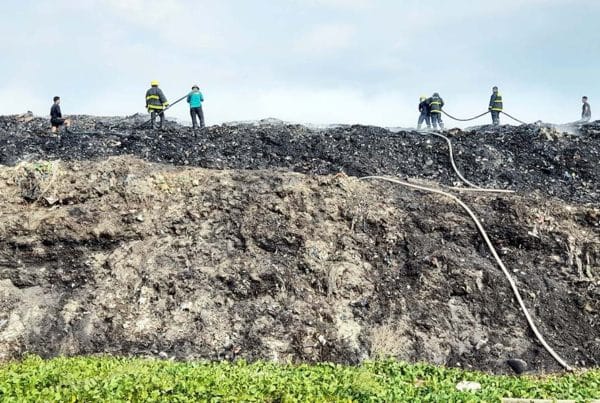Dredging of Dagupan rivers to start soon
DREDGING activities to clean up Dagupan City’s rivers will start soon as work Task Force Kalikasan’s work in neighboring Binmaley town is completed.
City Agriculturist Emma Molina said the city government is now just waiting for the dredging machine, owned by the provincial government which organized Task Force Kalikasan, to be moved to Dagupan.
The city government of Dagupan will shoulder the cost of the machine’s oil, maintenance and food for the members of the Task Force that will carry out the dredging work.
Molina, speaking over the radio program Pantontongan Tayo, said the rivers are now ready for dredging following the dismantling of fishing structures in the areas of Salapingao, Pugaro, Carael and Lucao
Meanwhile, the city’s own dredging machine, which is currently undergoing repair, will also be used in some areas, including Dawel, Tanap and Bonuan Gueset.
She added that the so-called “skylab” structures that are still visible will be before the dredging operations begin.
BETTER PRODUCTION
Molina said the city’s fish industry is expected to benefit from the dredging with improved production.
“Mas ombaleg so produksyon kasumpal to tan antokaman ya abalang natan et naalmo da met lamlamang,” she said.
Meanwhile, several fish pen operators have decried the demolition of their fish pens which is being implemented together with a one-year moratorium on fish pens imposed by the city government.
But Molina pointed out that the city’s river system has long been abused and polluted by the fish pen operators who have done nothing to alleviate the situation.
After the dredging, Molina said the fish industry can begin to engage in raising high value products like malaga and talakitok in addition to bangus, the city’s trademark product.
Dagupan produces about 12 tons of bangus everyday, which is about 50% of the market demand.
BACK TO FISH PONDS
Meanwhile, Molina also called on fish farmers to return to fishpond operations to give the city’s rivers time to “breathe”.
Most fishponds have been converted into “transition ponds” where bangus fingerlings are cultivated to a certain size and then transferred to the fish pens.
Many fishpond owners have since shifted to fish pen operations along the rivers because it is deemed cheaper. About P1 million is needed to develop a hectare of fishpond, while only about a small fish pen requires much smaller capital.
The city has about 1,000 hectares of fishponds, of which 80% are being targeted for revival, according to Molina.
Share your Comments or Reactions
Powered by Facebook Comments









